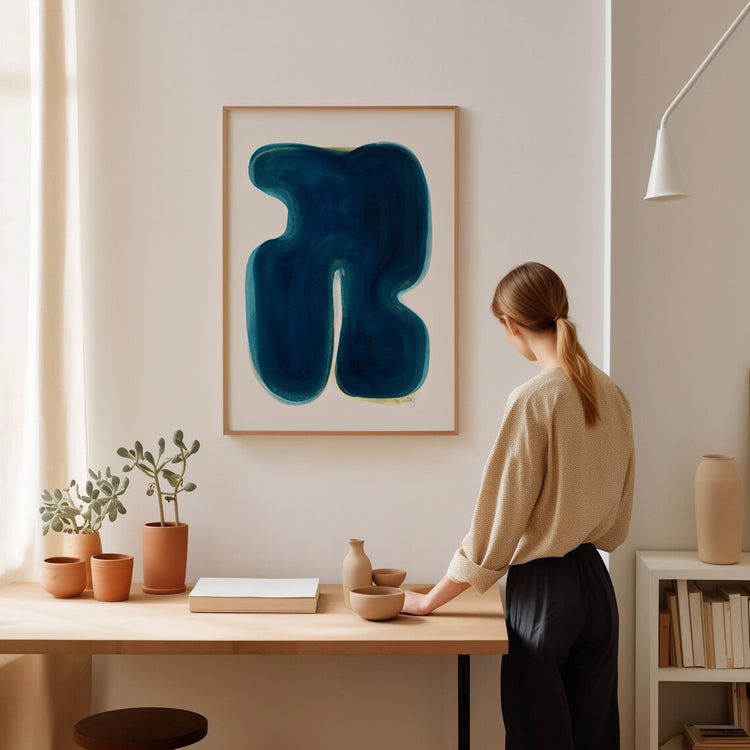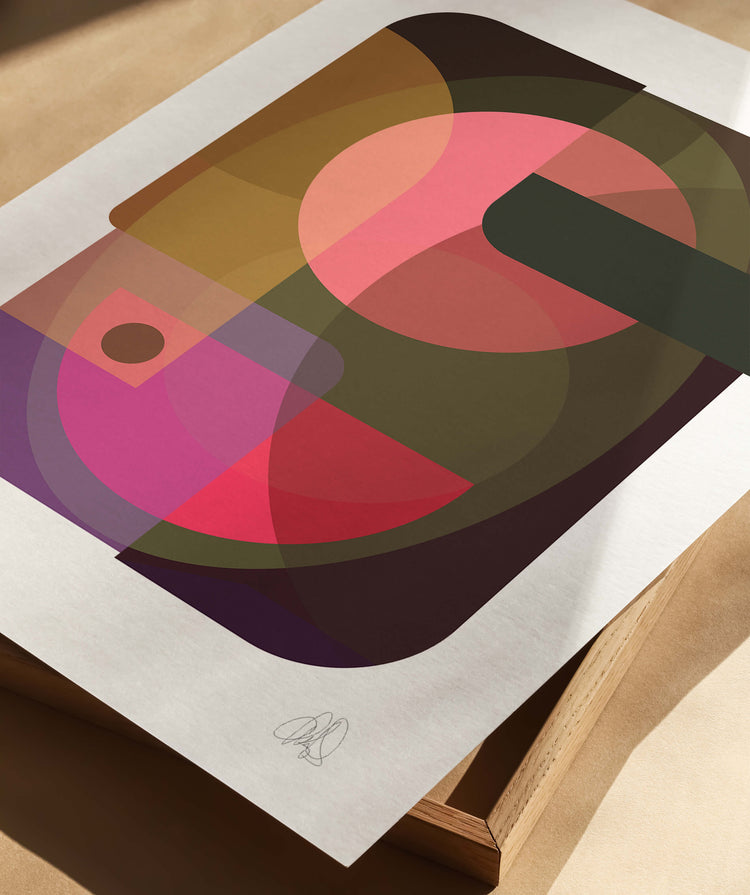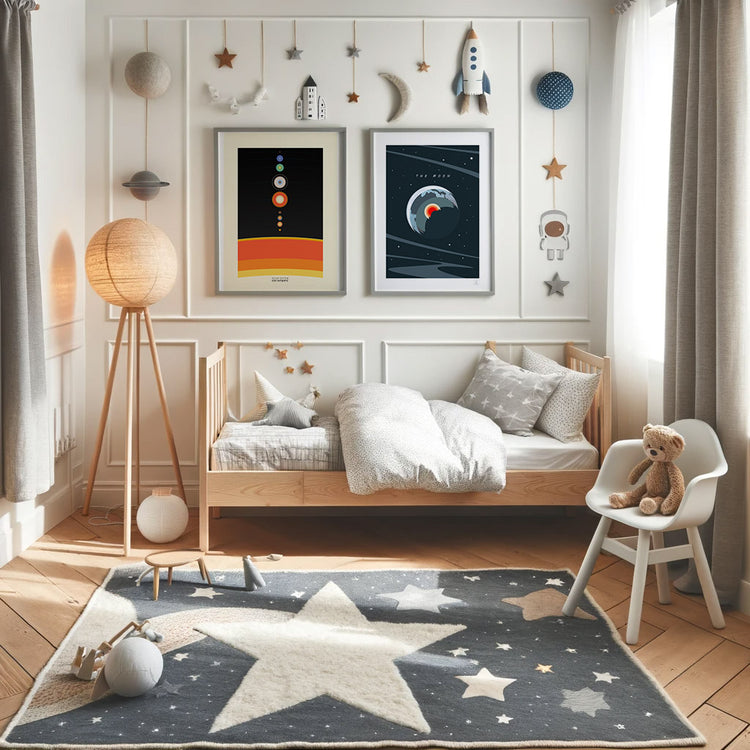Samtidskunst har ændret den måde, vi oplever og interagerer med kunstneriske udtryk på. I den digitale tidsalder har samtidskunst udvidet sig ud over gallerier og museer, hvilket har gjort den mere tilgængelig. Lad os udforske samtidskunst online og opdage dens karakteristika, stilarter og nøglebegreber.
Nøglepunkter: Samtidskunst
- Henviser til kunst skabt fra 1960'erne/70'erne til i dag
- Omfatter forskellige stilarter som popkunst, konceptualisme og gadekunst
- Bruger nye teknologier som digitale medier og AI
- Ofte omhandler sociale og politiske problemstillinger
- Udvisker linjer mellem forskellige kunstformer og medier
- Fremhæver kunstnerens ideer og processer frem for traditionelle færdigheder
- Inkluderer interaktive og fordybende oplevelser
Hvad definerer samtidskunst?
Samtidskunst refererer til kunstværker skabt fra 1960'erne eller 1970'erne og frem til i dag. Den omfatter mange stilarter, medier og ideer, der viser vores mangfoldige verden. Abstrakt kunst er en stor del af samtidskunsten og udfordrer ofte vores måde at tænke på kunst. Samtidskunst flytter grænser, sætter spørgsmålstegn ved samfundet og engagerer beskueren på nye måder.
De fire stilarter inden for samtidskunst
Selvom samtidskunst er mangfoldig, er der opstået fire hovedstilarter:
- Konceptuel kunst: Fokuserer på ideer frem for visuelle former
- Minimalisme: Fremhæver enkelhed og geometriske former
- Installationskunst: Skaber fordybende oplevelser
- Performancekunst: Bruger live-action som kunstnerisk udtryk
Disse stilarter blandes og inspirerer ofte hinanden og skaber en rig variation af kunstneriske udtryk. Grafisk kunst indeholder ofte elementer fra disse stilarter og tilbyder en unik blanding af moderne udtryk. Hver stil bidrager til den igangværende samtale i kunstverdenen og får os til at tænke over kunst og dens rolle i samfundet.
Syv nøglebevægelser i samtidskunst
Samtidskunst omfatter forskellige bevægelser, der har formet dens vej:
- Popkunst: Hylder populærkultur og massemedier
- Neoekspressionisme: Genopliver følelsesmæssigt og personligt maleri
- Gadekunst: Bringer kunst ind i det offentlige rum
- Digital kunst: Bruger teknologi som medie
- Fotorealisme: Sigter mod meget realistiske repræsentationer
- Videokunst: Udforsker levende billeder som kunstform
- Økokunst: Håndterer miljøhensyn gennem kunst
Hver af disse bevægelser har bidraget til den mangfoldige verden af samtidskunst og påvirket både kunstnere og beskuere. Minimalistisk kunst henter ofte idéer fra disse bevægelser og skaber slående visuelle udtryk, der matcher enkelheden og klarheden i moderne design.

Fire karakteristika ved samtidskunst
Samtidskunst er kendt for:
- Mangfoldighed i medier og stilarter: Kunstnere afprøver forskellige materialer og teknikker
- Konceptuelt fokus: Ideen bag kunstværket er ofte lige så vigtig som hvordan det ser ud
- Socialt og politisk engagement: Mange kunstnere behandler aktuelle problemstillinger i deres arbejde
- Teknologisk integration: Nye teknologier bruges som både værktøjer og emner
Disse karakteristika giver kunstnere mulighed for at udforske nye ideer og udfordre sædvanlige kunstnormer. Rumtemakunst viser ofte disse karakteristika ved at blande videnskabelige ideer med kunstnerisk vision for at skabe tankevækkende og visuelt fantastiske værker, der fanger vores fantasi.
Moderne kunst vs. samtidskunst: Forstå forskellen
Selvom de ofte blandes sammen, er moderne kunst og samtidskunst forskellige perioder:
- Moderne kunst: Betegner normalt kunst skabt fra 1860'erne til 1970'erne
- Samtidskunst: Omfatter kunst skabt fra 1970'erne til i dag
Moderne kunst fokuserede på at udfordre traditionelle teknikker, mens samtidskunst ofte taler om aktuelle sociale problemstillinger og bruger nye teknologier. Skiftet fra moderne til samtidskunst viser, hvordan kulturen har ændret sig, og hvordan kunstens rolle i samfundet har udviklet sig. Blomsterkunst kan findes i både moderne og nutidige stilarter, hvilket viser, hvordan kunstnerisk udtryk har ændret sig, og hvordan naturtemaer i kunsten stadig er populære.

Klassificering af samtidskunst
Samtidskunst kan sorteres på flere måder:
- Mediebaseret klassificering (f.eks. maleri, skulptur, digital kunst)
- Tematisk klassificering (f.eks. politisk kunst, miljøkunst)
- Konceptuel klassificering (f.eks. abstrakt, figurativ)
Disse klassifikationer hjælper os med at forstå og værdsætte den mangfoldige natur af samtidskunst. De giver os en måde at analysere og diskutere kunstværker på, samtidig med at de viser, hvordan forskellige kunstneriske tilgange er forbundet. Malerier er stadig et populært medie i samtidskunst, hvor man ofte blander traditionelle teknikker med moderne ideer for at skabe værker, der forbinder klassiske og moderne stilarter.

Billedkunst vs. samtidskunst: Brobygning
Grænsen mellem billedkunst og samtidskunst er ofte sløret:
- Billedkunst: Traditionelt knyttet til akademisk uddannelse og klassiske teknikker
- Samtidskunst: Omfatter en bredere vifte af stilarter, medier og koncepter
Mange samtidskunstnere bygger bro over denne kløft ved at bruge traditionelle teknikker i moderne kontekster. Denne blanding af gammelt og nyt skaber en dynamisk samtale mellem kunstneriske traditioner og moderne innovation. Farveblyantkunst er et godt eksempel på, hvordan traditionelle medier gentænkes i samtidskunst, hvilket viser den alsidighed og vedvarende appel, som klassiske teknikker har i moderne kunstnerisk udtryk.

Principper og fokus for samtidskunst
Samtidskunst følger flere principper:
- Eksperimentering og innovation: At flytte grænser og udforske nye muligheder
- Kulturkommentar: Reflektering og kritik af samfundsmæssige problemstillinger
- Publikumsengagement: Opmuntring til seerdeltagelse og fortolkning
- Tværfaglige tilgange: Kombination af forskellige kunstformer og discipliner
Disse principper gør det muligt for kunstnere at skabe værker, der forbinder sig med et moderne publikum og adresserer aktuelle problemstillinger. De fremmer en dynamisk og stadigt skiftende kunstscene, der afspejler kompleksiteten i det moderne liv. Uindrammede plakater viser ofte disse principper og tilbyder tilgængelig og tankevækkende kunst til hverdagsrum, så folk kan engagere sig i samtidskunst i deres personlige miljøer.

Samtidskunst i onlineverdenen
Den digitale tidsalder har ændret, hvordan vi oplever samtidskunst:
- Virtuelle udstillinger og gallerier: Giver global adgang til kunstsamlinger
- Online kunstmarkedspladser: Forbinder kunstnere direkte med købere
- Digital kunst og NFT'er: Udforskning af nye ideer inden for digitalt ejerskab og kreativitet
- Sociale medieplatforme til kunstnerpromovering: Nye måder til kunstnerisk eksponering på
Disse digitale platforme har gjort samtidskunst mere tilgængelig, hvilket giver kunstfans mulighed for at udforske og købe kunstværker fra hele verden. Onlineverdenen har gjort kunstforståelse og -samling mere åben for alle, hvilket har brudt geografiske barrierer og skabt nye muligheder for kunstnerisk udveksling. Online kunstsamlinger tilbyder en bred vifte af samtidskunstværker, fra digitale tryk til traditionelle malerier, der henvender sig til mange forskellige smage og præferencer i kunstverdenen.
Konklusion: Fremtiden for samtidskunst online
I takt med at teknologien fortsætter med at ændre sig, gør samtidskunstens verden det også. Onlineplatforme har skabt nye måder for kunstnere at skabe, dele og sælge deres værker, samtidig med at kunstfans kan udforske og engagere sig i kunst hjemmefra. Den digitale verden er blevet en vigtig del af samtidskunstlandskabet og tilbyder uendelige muligheder for kreativitet og innovation.
Fremtiden for samtidskunst online lover endnu mere integration af teknologi, hvor virtuelle og augmented reality-oplevelser potentielt kan ændre, hvordan vi interagerer med kunstværker. I takt med at linjerne mellem fysiske og digitale rum fortsætter med at blive slørede, vil samtidskunst sandsynligvis tilpasse sig og reagere og skabe nye udtryksformer, der udfordrer vores opfattelser og engagerer vores sanser på nye måder.
Uanset om du er en erfaren kunstsamler eller bare nysgerrig, tilbyder det at udforske samtidskunst online en unik og berigende oplevelse. Fra abstrakte plakater til grafisk kunst er samtidskunstens verden lige ved hånden. Udforsk og oplev den fængslende verden af samtidskunst i den digitale tidsalder, hvor kreativiteten ikke har nogen grænser, og det kunstneriske udtryk fortsætter med at udvikle sig og inspirere.






